When starting out keeping finches, the bird that is always recommended is the zebra finch. These adorable little birds are easy to keep, will breed readily and don’t need anything in the way of special conditions.
They come in a host of different colours, or mutations, and will happily live with almost any kind of finch. They can usually be sexed visually, so this makes getting a pair much easier and whilst not having the most melodic of song, make up for this with pure enthusiasm.
Zebra Finch Basics
The Zebra Finch (Taeniopygia guttata) is a member of the Estrildid group of finches, sometimes referred to in the UK as the exotic finches to separate from the family that contains British finches such as the Greenfinch and Goldfinch, along with the Canary.
It is closely related to the Owl Finch, or Double-barred Finch. Its native habitat is across most of central Australia, Indonesia and East Timor as well as having been introduced to Puerto Rico, Portugal, Brazil and the US.
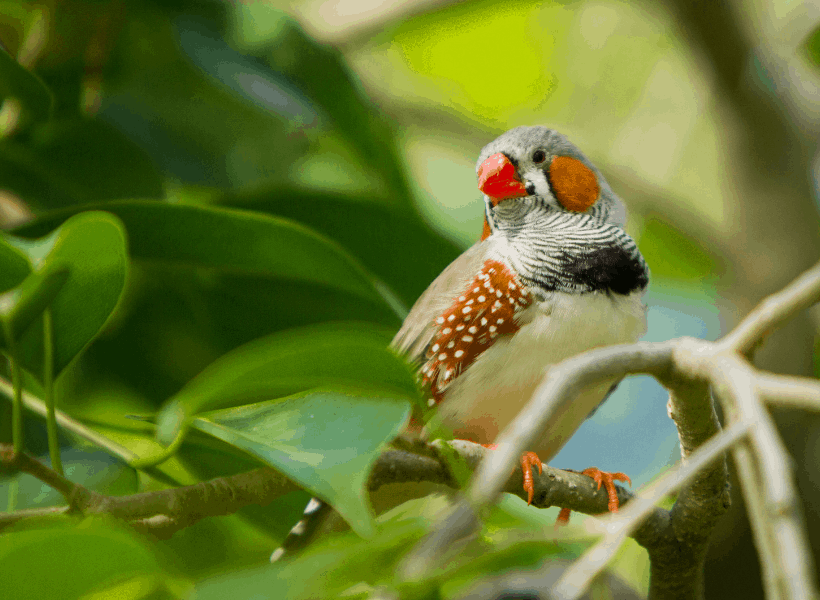
In the wild, the Zebra lives in different types of grasslands as well as forest areas as long as they are near to water. They also live in open steppes with scattered bushes and trees and around human habitation where they have learned to make use of patches of deforested land with human-made watering spots.
Keeping Zebras
The natural lifespan of the Zebra is around five years in the wild but captivity they can easily live to the age of 7 to 12 years and one case reached 14.5 years of age.
Zebras are primarily seedeaters and their beaks are ideal for dehusking seeds. They love millet but will happily eat a range of other seeds as well, with a Foreign Finch mix being an ideal basis for their diet in captivity. They will often eat egg food and fresh foods including lettuce, apples, grapes, spinach, kale and berries. Millet spray will be devoured avidly and often before anything else, so tends to be given as a treat food, rather than the main food item.
These finches need access to clean water as they drink plenty and also are very enthusiastic bathers. A simple bath bowl for bathing is perfect and a separate water dispenser of some form to keep clean drinking water is also a good idea. They are quite messy birds who throw seed husks around so often end up tossing waste into their bathing water!
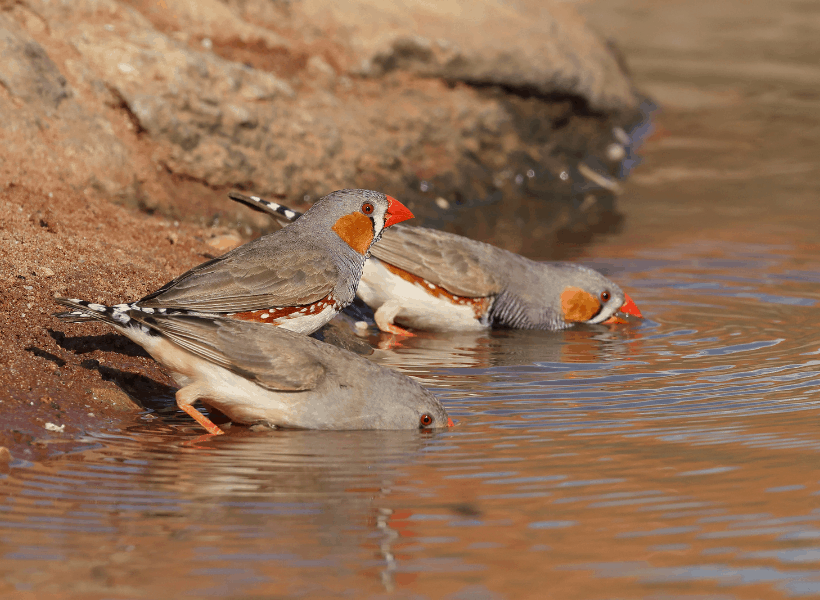
Zebra finch mutations
The other thing that makes Zebras so interesting to keep is the mutations. There are loads of stable mutations that take the natural bird and give it a twist. Learning about them, breeding them and trying to breed different ones is a big part of breeding this species.
A few examples below from left to right include: black breast crested (with the mad hairdo), normal, black cheek Chestnut Flanked White (CFW), White and Fawn.
A few more examples of common mutations:
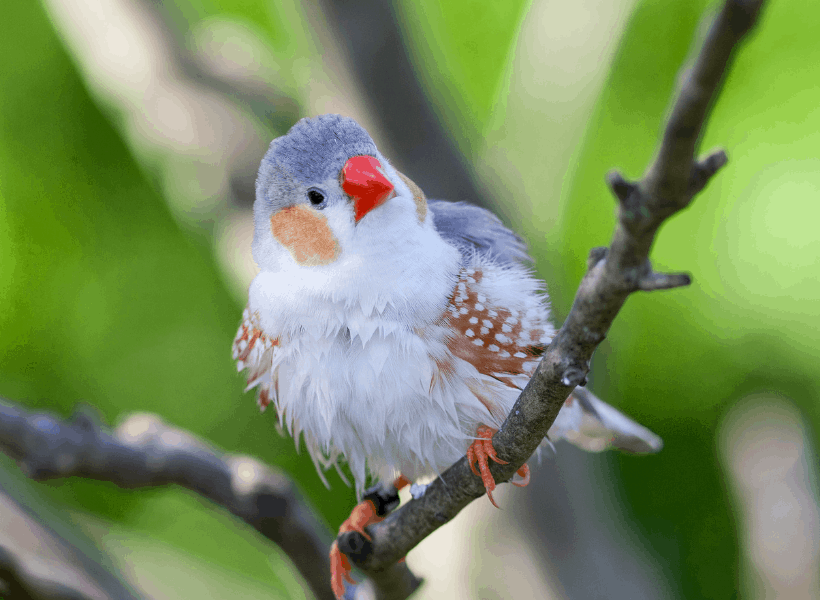
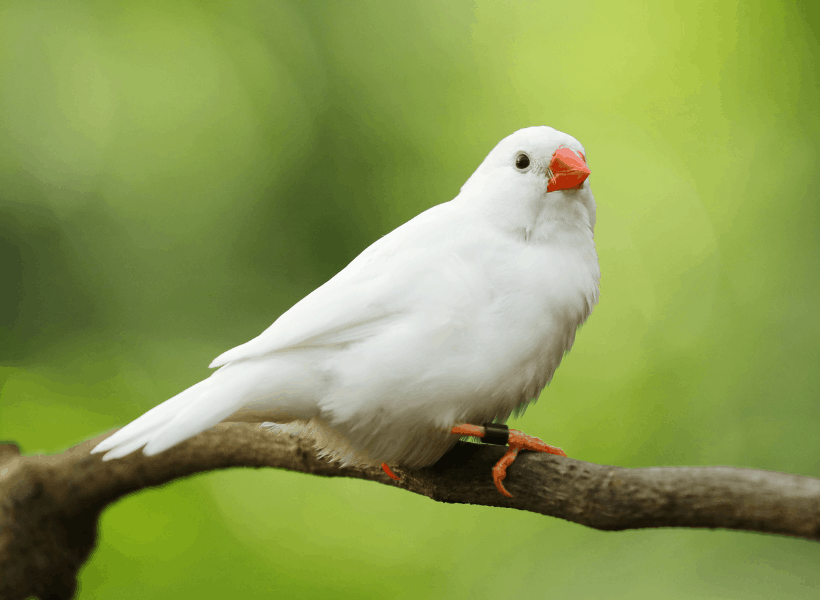
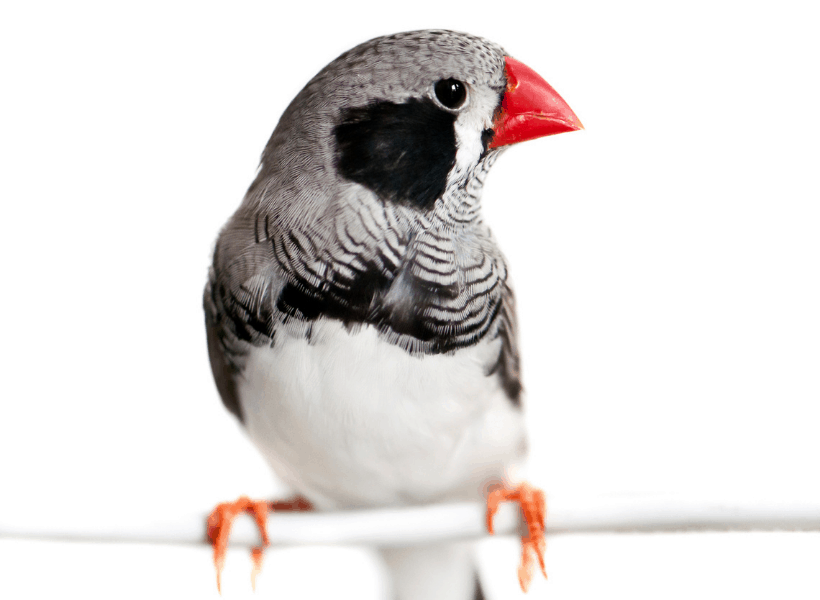
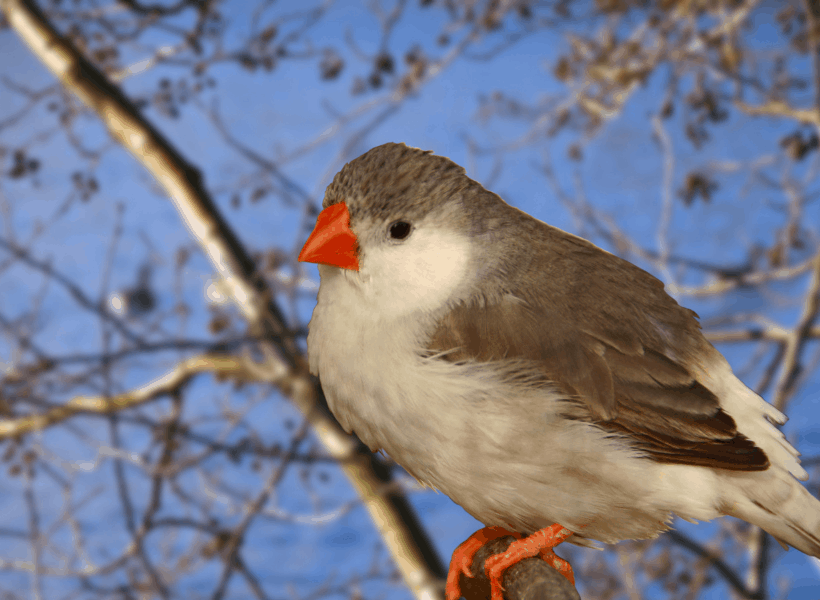
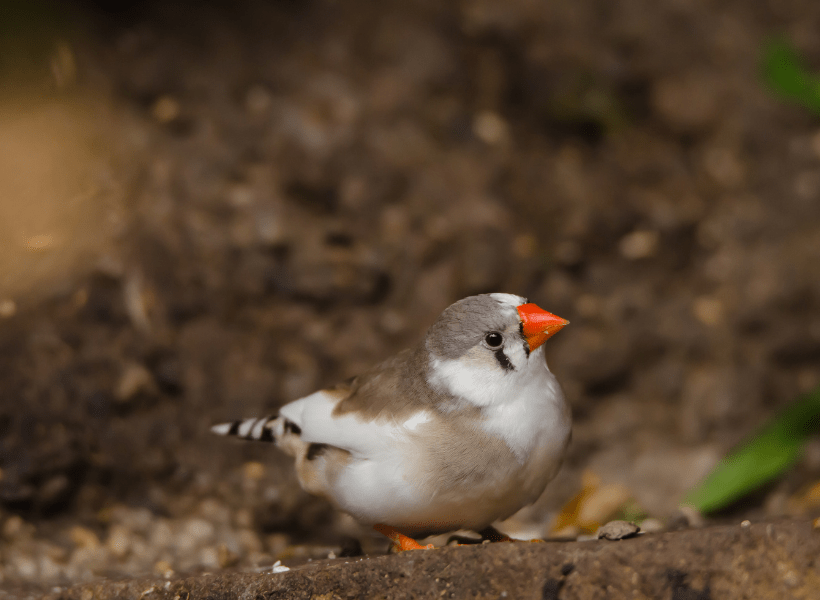
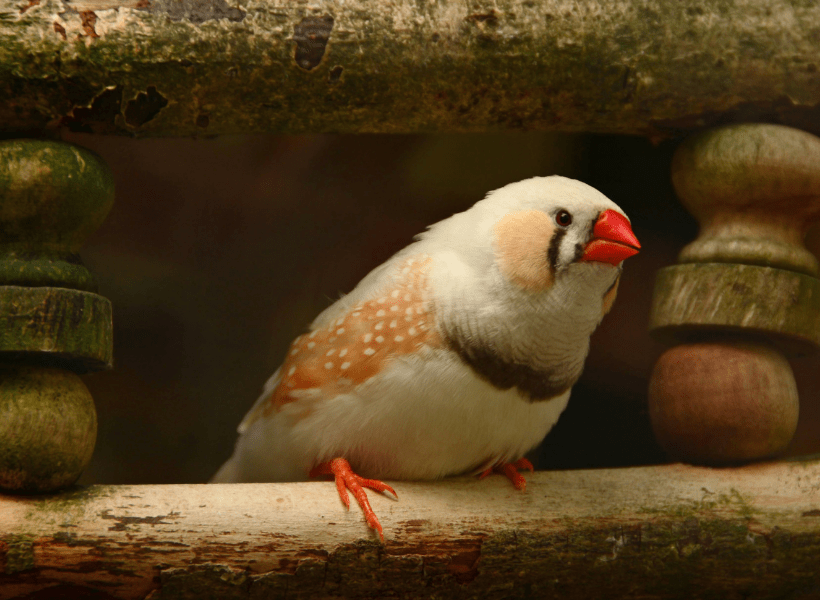
Zebra’s Song
If you are looking for a songbird, then the Zebra won’t be the finch for you. These little birds have plenty to say but their song is more of a series of beeps, meeps and other odd sounds than the type of song heard from a canary. What they lack in quality, they make up for in quantity – male Zebras sing a lot, they sing loud and they enjoy singing.
Studies show that a young male Zebra learns from the sounds he hears around him, including from his father but every bird’s song is slightly different. They begin to sing in puberty, though these tend to be squeaking and random sounds that slowly develop into their full adult repertoire.
The male’s song is essentially a mating call and it has been shown that they find singing to a female a rewarding experience. Females too make a range of noises, though not the full-scale song. A high-pitched whining sound is a preliminary sound to mating while a hissing noise is used to ward others away from their nests. Otherwise, the females make a range of beeps and meeps as they go about their business.
Breeding Zebras
Breeding season in the wild is dictated by the rains – after the heavy rains, these birds will nest and reproduce. This results in the urge to breed at any time in captivity as the weather conditions are largely unchanged and is one of the things that makes them so easy to keep. When not breeding, they will usually either sleep in the nest or have a brood nest in which to sleep.
Many Zebras are impressive nest builders given the opportunity but will also use wooden finch nesting boxes of a variety of sizes and shapes. Coconut fibres, jute, sisal and similar types of material will all be used as well as feathers and other soft material used for the lining.
When keeping more than one pair of zebras, always provide at least one nest box per pair and more than one ideally so they can choose their own box and don’t be surprise if they find strange spots to build a nest on their own. Once a pair pick a box and are ready to lay, they will become defensive of the box and no other birds will be allowed to enter it.
Two to seven eggs are typically laid in the nest and are incubated by both parents. The chicks hatch after around two weeks and leave the nest at about three weeks. They are fed by their parents for a week or two after fledging and can be distinguished from adults by their black beaks and begging behaviour. They are often increasingly noisy, as their parents no longer need to feed them and will call to their parents from the perch to their side with heads held at an angle.
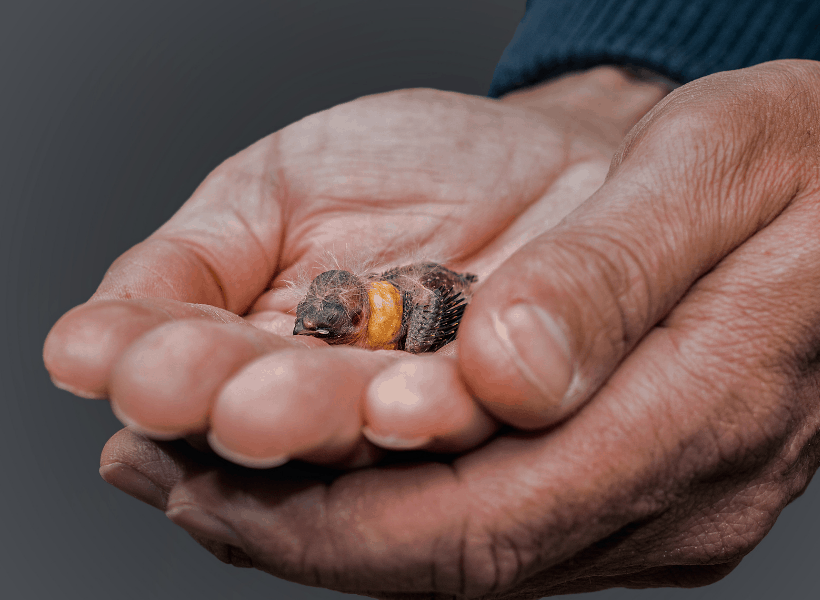
Conclusion
Zebra finch can live in a cage, an indoor aviary or an outdoor aviary and apart from food, water, somewhere to sleep and nest and companionship; they have little in the way of requirements. They can learn to come to the hand for food but finches typically never become tame in the way that parrots can do.
However, they are little characters who are constantly busy and active, offering endless entertainment with their antics and the pleasure of seeing first-hand the cycle of life when they produce their tiny, pink chicks.
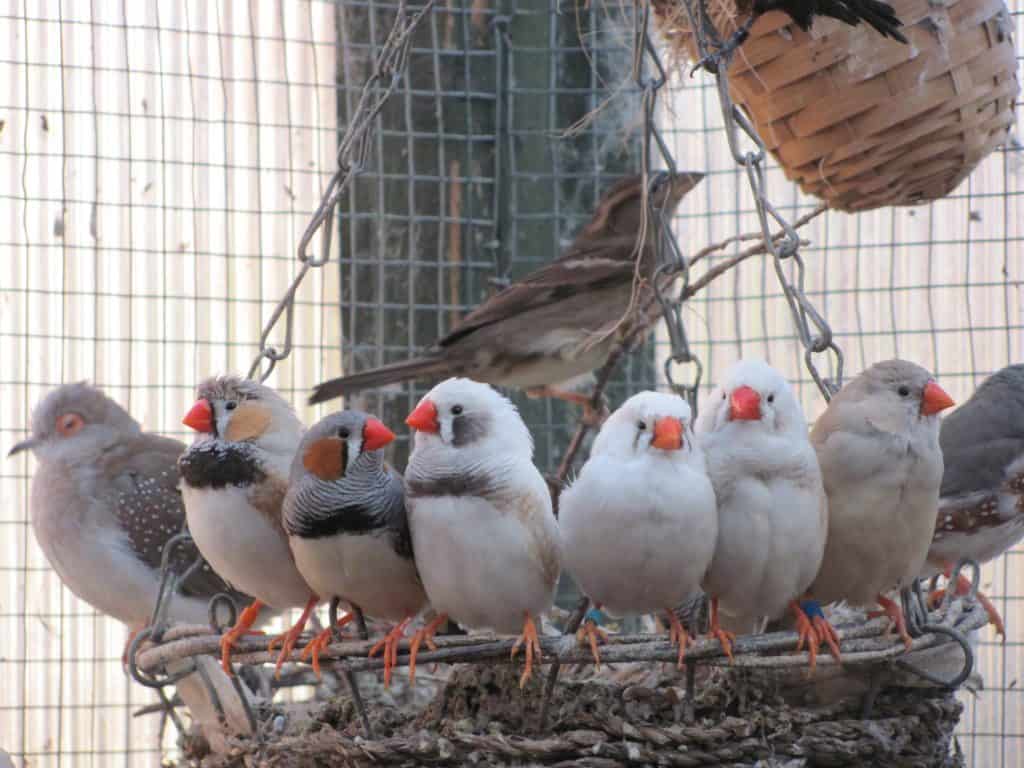
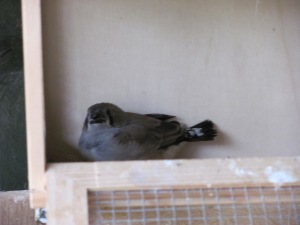
4.5
0.5
Was breeding whit & fawn finches. When a bird would leave the nest box to eat I’d see a bird from a different nestbox, taking a newly hatched, & throw it out of the nest to the bottom of the cage. I lost about 3 babies this way. Very upsetting.